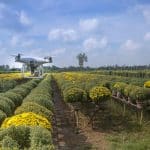In the ever-evolving world of gourmet coffee, achieving the perfect brew is a combination of art, science, and a touch of magic. You don’t just brew a cup of coffee. You coax out the robust flavors hidden within each bean through careful extraction, guided by the principles of chemistry and thermodynamics. But, before diving into the intricacies of brewing, let’s begin with the genesis of every great cup: the coffee beans.
The Magnificence of the Coffee Bean
The journey to the ultimate cup of coffee starts with the humble coffee bean. These tiny seeds hold the potential for an array of flavors, from sharp citrus notes to decadent chocolate undertones.
Dans le meme genre : Luxury property rentals in Monaco: what you need to know
Coffee beans are the seeds of the Coffea plant, native to tropical regions of Africa. They are typically harvested, processed, and then roasted to various degrees, each level of roast imparting its unique profile to the final brew. The beans must be stored properly to maintain their freshness and flavor integrity. Once you’re ready to brew, the beans are then ground to a consistency that matches your chosen brewing method.
One of the science-backed rules of coffee brewing highlights the importance of the grind. The size of the coffee grounds will play a major role in determining the taste of your brew. Finer grounds have more surface area and thus extract faster than coarse ones. For example, espresso requires a fine grind, while a French press calls for a coarser grind.
A lire en complément : Renewable energy in the home: practical tips for going green
The Science of Coffee Extraction
Extraction is where the flavors in your coffee are born. It’s the process where the desirable flavors from the coffee grounds are dissolved into the water. The science behind this process involves a delicate balancing act.
The rate of extraction depends on the ratio of coffee to water, the temperature of the water, and the time the water is in contact with the coffee grounds. Over-extraction can lead to a bitter taste, as undesirable components like fibers, while under-extraction leaves you with a weak, insipid brew.
Water temperature is also crucial. The Specialty Coffee Association recommends a temperature range of 195 to 205 degrees Fahrenheit (90.6 to 96.1 degrees Celsius) for optimal extraction. Too cool, and the extraction will be weak; too hot, and it can over-extract the coffee, leading to a burnt or bitter taste.
Brewing Methods: From Espresso to Cold Brew
When it comes to brewing coffee, there are countless methods to choose from, each with its unique characteristics and flavor profiles.
For a strong, full-bodied cup, consider the espresso method. This method forces hot water under high pressure through finely-ground coffee, resulting in a concentrated brew with a rich, bold flavor. Espresso is the base for many coffee shop favorites like lattes, cappuccinos, and mochas.
If you prefer a less intense brew, the pour-over method might be for you. This method involves pouring hot water over coffee grounds in a filter. The water then drips through the coffee and filter into a carafe or mug. Pour-over brewing allows for control over the brewing process, and the result is a clean and flavorful cup of coffee.
Cold Brew, on the other hand, involves steeping coarsely ground coffee in cold water for an extended period (typically 12 to 24 hours). This slow extraction process results in a smooth, naturally sweet, and less acidic brew.
The Perfect Brew: A Balance of Art and Science
Achieving the perfect brew is a continual process of learning, experimentation, and fine-tuning. It takes both the precision of science and the creativity of art.
Understanding principles like extraction and the importance of grind size will provide a solid foundation for your brewing adventures. However, don’t forget that coffee brewing is also an art form. The choice of beans, the roast, and the brewing method are all influenced by personal preference and taste.
Remember, there isn’t one universally “perfect” cup of coffee. What’s perfect for you might not be for someone else. So, feel free to experiment and tweak until you find your ideal brew.
In the end, the art and science of coffee brewing is about far more than just a caffeine boost. It’s a ritual, an experience, and above all, a way to appreciate the humble coffee bean in all its glory. From beans to brew, each step is a testament to the magic that is coffee. Cheers to your next great cup.
Remember, as you sip your way to coffee enlightenment, to enjoy each moment, from the first whiff of freshly ground beans to the last drop of your perfect brew.
The Art of the Perfect Brew: Tastes and Preferences
The art of coffee brewing lies in the ability to create a cup of coffee that perfectly suits your tastes and preferences. This involves understanding the grind size, brewing method, water temperature, and brew time that create the flavors you enjoy most.
Water temperature and brew time are two significant factors in brewing the perfect cup. As mentioned earlier, the Specialty Coffee Association recommends a water temperature range of 195 to 205 degrees Fahrenheit (90.6 to 96.1 degrees Celsius) for optimal extraction. Adhering to this range avoids under-extraction or over-extraction, ensuring your coffee’s flavor isn’t weak or overly bitter.
In terms of brew time, different brewing methods require different lengths of time to achieve the best extraction. For instance, an espresso shot requires a very short brew time — typically around 20 to 30 seconds. A French press, on the other hand, should steep for around four minutes before plunging for the best flavor.
Exploring different brewing techniques can also enhance your coffee experience. If you enjoy a robust, concentrated flavor, the espresso or French press methods might be right for you. If you prefer a smoother, less acidic taste, you might enjoy cold brew coffee, which is steeped in cold water for 12 to 24 hours.
Remember, the art of coffee brewing is a personal journey. Don’t be afraid to experiment with grind sizes, brewing methods, and extraction times until you find your perfect brew.
Conclusion: The Journey from Beans to Brew
The journey from coffee beans to the perfect brew is a fascinating combination of art and science. It’s a process that requires knowledge and understanding of the science of coffee extraction, as well as the creativity and experimentation inherent in the art of brewing.
The first step in this journey is selecting the right coffee beans. The origin, roast level, and storage of your beans can dramatically impact the flavor of your final cup.
Next, you need to grind your beans to the appropriate consistency for your chosen brewing method. The size of your coffee grounds can significantly affect your brew’s taste, as it determines the speed and extent of extraction.
Then comes the actual brewing process, where the temperature of your hot water and the brew time can make or break your cup of coffee. The right balance will extract the desirable flavors from your ground coffee, giving you a tasty and satisfying brew.
Last but not least, don’t forget that coffee brewing is an art. It involves personal preferences, experimentation, and a love for the process. There is no universally perfect cup of coffee, only the perfect cup for you.
So, as you continue your journey in the world of coffee brewing, remember to savor each moment. From the first whiff of freshly ground beans, to the sound of water bubbling, to the first sip of your perfect brew: this is the magic of coffee. Here’s to many more delicious cups to come!











